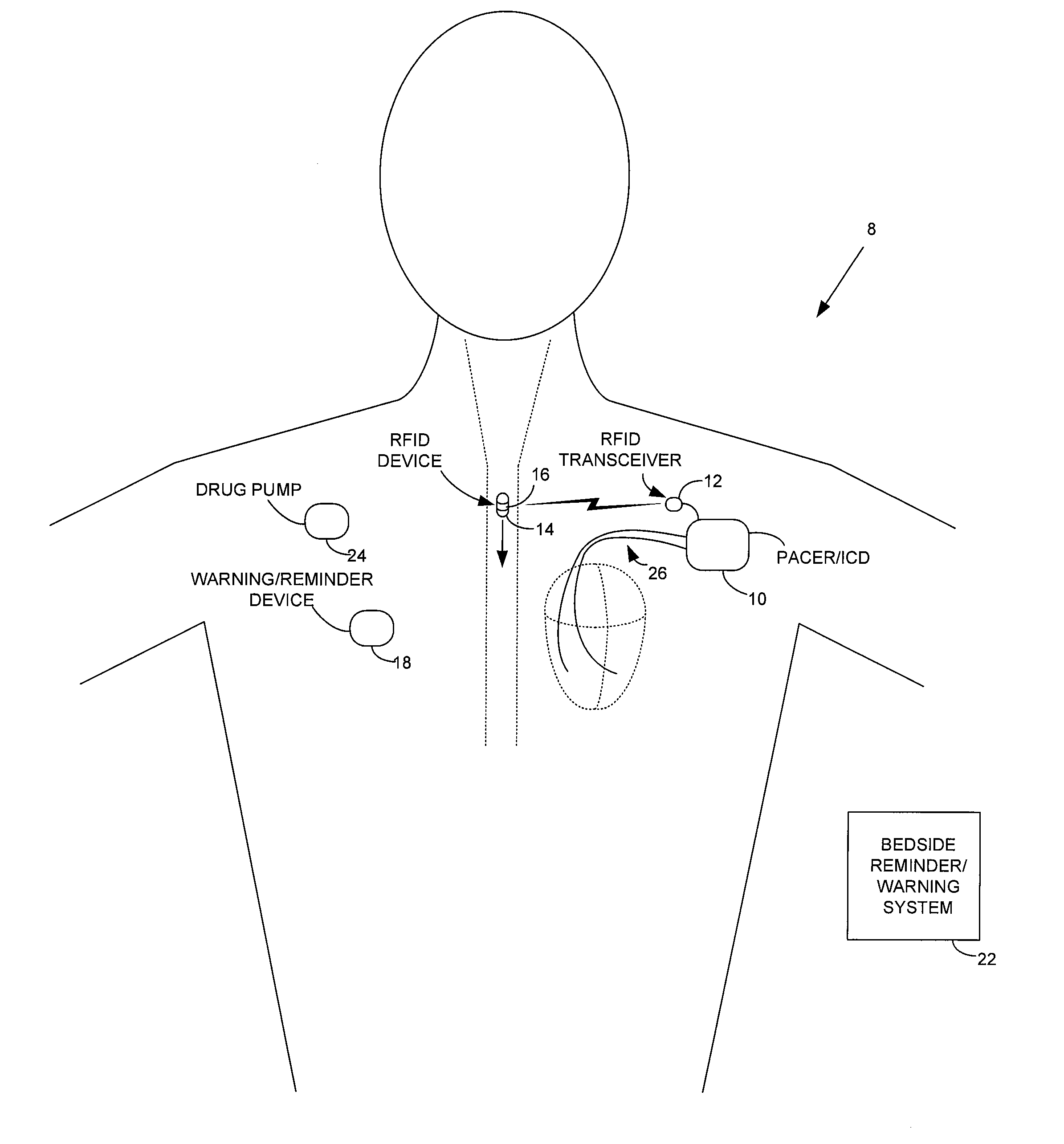Method and apparatus for monitoring ingestion of medications using an implantable medical device
a medical device and ingestion monitoring technology, applied in the field of implantable medical devices, can solve the problems of not being able to orally ingest medications, not being able to ensure the not being able to take the prescribed dosage of the drug in a timely manner, so as to reduce the risk of atrial fibrillation, reduce the likelihood of af, and reduce the risk of ventricular fibrillation
- Summary
- Abstract
- Description
- Claims
- Application Information
AI Technical Summary
Benefits of technology
Problems solved by technology
Method used
Image
Examples
Embodiment Construction
[0028]The following description includes the best mode presently contemplated for practicing the invention. The description is not to be taken in a limiting sense but is made merely for the purpose of describing the general principles of the invention. The scope of the invention should be ascertained with reference to the issued claims. In the descriptions that follow, like numerals or reference designators are used to refer to like parts or elements throughout.
Overview of Implantable RFID-Based Medication Intake Monitoring System
[0029]FIG. 1 illustrates an implantable medical system 8 capable of: detecting ingestion of RFID-tagged medications; verifying the correct drug / dosage of the ingested medications; delivering any necessary warning or reminder signals if the correct drug / dosage of a prescribed medication has not been ingested in a timely manner; and controlling therapy in response thereto. Briefly, implanted system 8 includes a pacer / ICD 10 or other implantable medical device...
PUM
 Login to View More
Login to View More Abstract
Description
Claims
Application Information
 Login to View More
Login to View More - R&D
- Intellectual Property
- Life Sciences
- Materials
- Tech Scout
- Unparalleled Data Quality
- Higher Quality Content
- 60% Fewer Hallucinations
Browse by: Latest US Patents, China's latest patents, Technical Efficacy Thesaurus, Application Domain, Technology Topic, Popular Technical Reports.
© 2025 PatSnap. All rights reserved.Legal|Privacy policy|Modern Slavery Act Transparency Statement|Sitemap|About US| Contact US: help@patsnap.com



